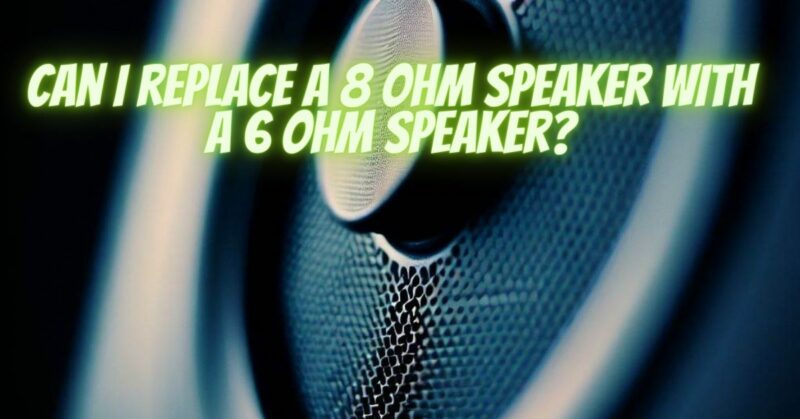In the world of audio equipment, speaker impedance plays a critical role in determining how speakers interact with amplifiers and impact overall sound quality. If you’re considering replacing an 8-ohm speaker with a 6-ohm one, it’s important to understand the implications of such a swap. This article explores the factors to consider and the potential effects of replacing an 8-ohm speaker with a 6-ohm speaker.
Understanding Speaker Impedance
Speaker impedance, measured in ohms (Ω), is the electrical resistance a speaker presents to the amplifier’s output signal. It influences how much electrical current flows through the speaker and how efficiently it converts that current into sound. Lower impedance values (like 6 ohms) result in increased current flow compared to higher impedance values (like 8 ohms).
Factors to Consider
- Amplifier Compatibility: The most crucial factor to consider when replacing a speaker is whether your amplifier is compatible with the new speaker’s impedance. Amplifiers are designed to work with specific impedance ranges, and using a speaker with an impedance outside that range can lead to distortion, overheating, or even amplifier damage.
- Power Handling: Check the power handling capabilities of the new 6-ohm speaker. It should match or exceed the power output of your amplifier. Running a speaker with lower power handling than your amplifier’s output can result in damaged speakers due to overpowering.
- Speaker Sensitivity: Consider the sensitivity rating of both speakers. Speakers with higher sensitivity require less power to produce the same volume. If the 6-ohm speaker has higher sensitivity, it might compensate for the reduced impedance to some extent.
- Sound Quality: Different speakers have distinct sonic characteristics. While impedance changes don’t directly affect sound quality, it’s essential to ensure that the tonal balance and characteristics of the new speaker match your preferences.
Effects of Changing Impedance
- Current Draw: A 6-ohm speaker draws more current from the amplifier than an 8-ohm one. While this might result in slightly increased volume, it’s important to remember that doubling the current draw results in only a 3dB increase in volume, which is perceivably modest.
- Power Delivery: Amplifiers might deliver slightly more power to a 6-ohm speaker compared to an 8-ohm one, potentially leading to marginally improved dynamic range.
- Amplifier Strain: If the amplifier is not compatible with 6-ohm speakers, it might strain to drive the new speaker, leading to overheating, distortion, or reduced amplifier lifespan.
Replacing an 8-ohm speaker with a 6-ohm speaker requires careful consideration of amplifier compatibility, power handling, and speaker sensitivity. While the change in impedance might lead to slight adjustments in volume and power delivery, the primary concern should be the overall compatibility and safety of your audio setup.
Before making any changes, consult your amplifier’s specifications, the manufacturer’s guidelines for both speakers, and if needed, seek advice from audio professionals. Proper research and consideration will help you make an informed decision that enhances your audio experience without compromising your equipment’s performance or longevity.

